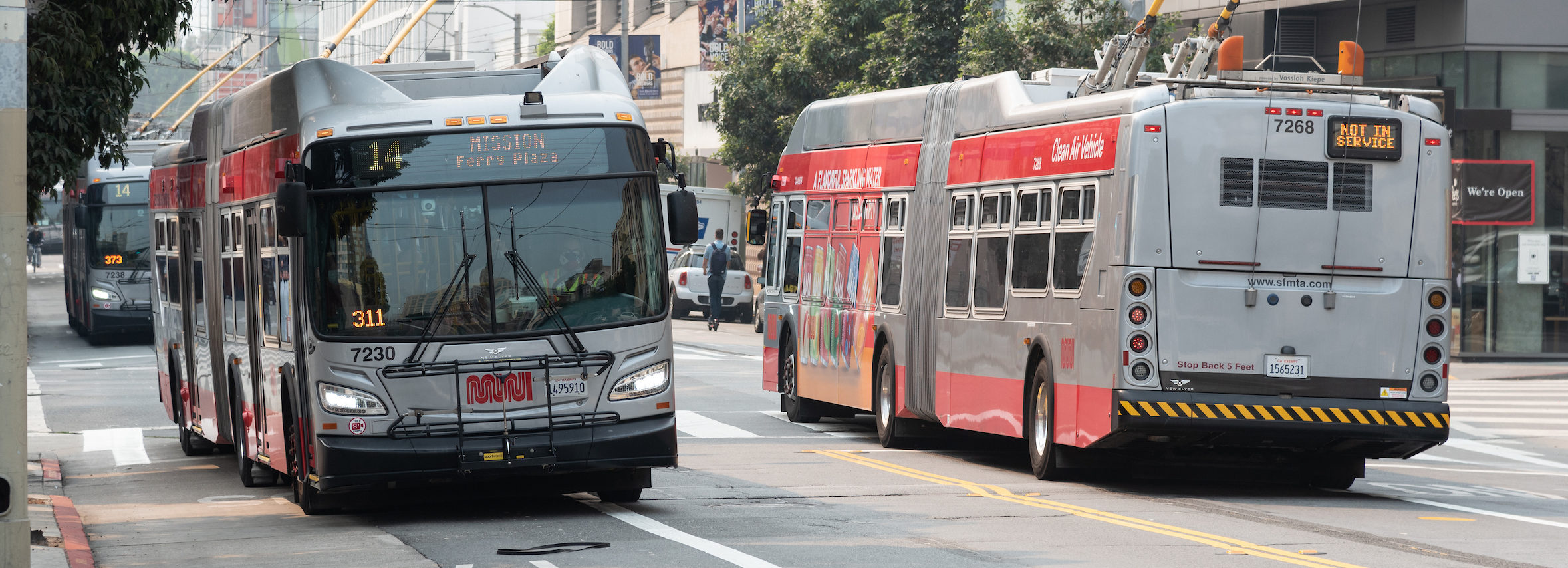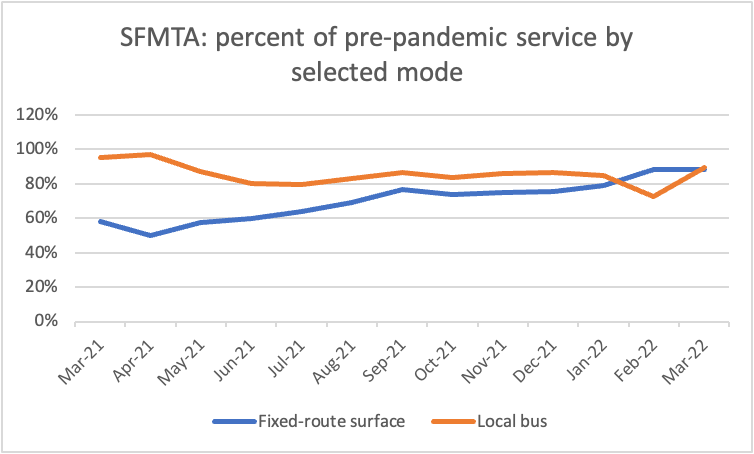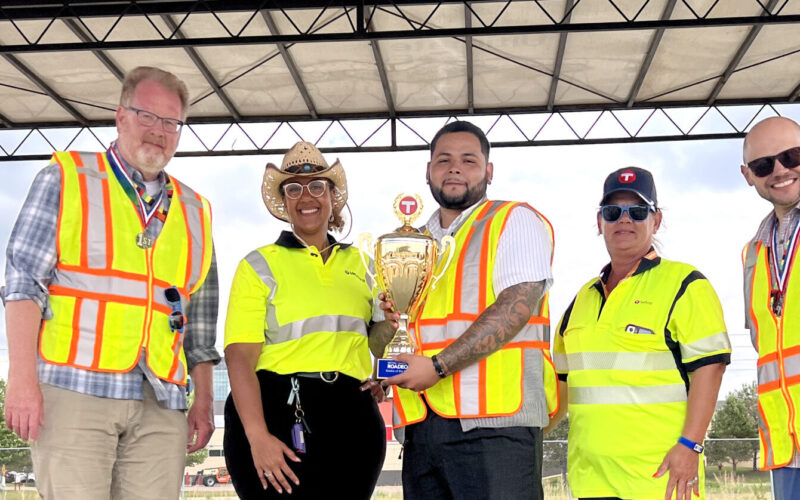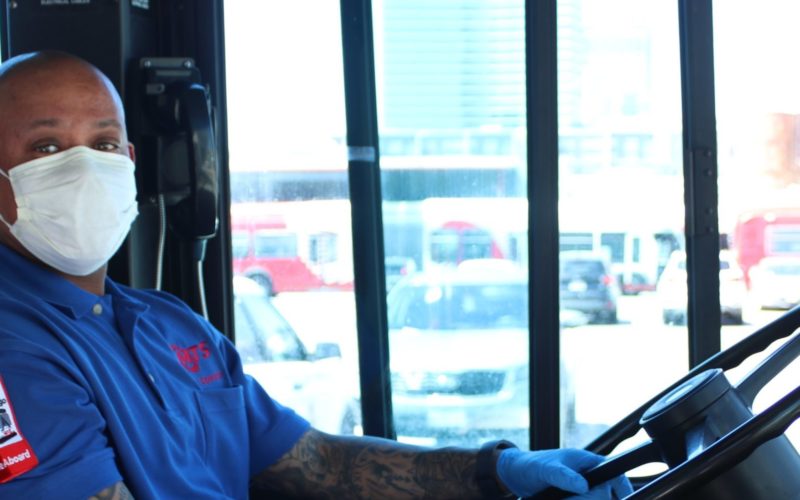
Bay Area providers have optimized access by transit while running less service: the average city resident can now reach about 10,000 more potential jobs in 45 minutes on transit than they could pre-pandemic.
This week we’re running a series that looks into what’s happening with transit service in the seven highest ridership U.S. cities. Our goal with this series is to facilitate a shared understanding of the challenges agencies are facing, give riders a sense of what they can expect for the remainder of 2022, and surface ideas for how agencies can better mitigate disruptions.
What’s going on with transit service in San Francisco?

SFMTA is another agency that was forced to reduce service in early 2022 to compensate for operators who were sick, quarantined due to exposure, or taking care of sick loved ones. At the time, the agency chose to adjust schedules rather than overschedule service that it knew it could not deliver. As described in its 2022 Muni Service Network Plan:
“To make schedules more reliable and reduce wait times and crowding, we are working to schedule service that reflects available operator staffing. This means we are only scheduling service we know we have the staff to cover.
Unfortunately, we haven’t been able to add service as quickly as we had hoped because of our severe transit operator shortage, and because of the impact of the COVID-19 surges on our plans to hire more operators. We are adding more service as soon as we can and are doing everything in our power to hire more transit operators and other transit staff to make that possible.”
The agency had also announced its intent to return to 85% of pre-pandemic service in 2022 and it appears to have met its goal. As of March 2022, SFMTA was operating 88% of pre-pandemic service and added back even more service in July. Of note, SFMTA currently has the lowest ridership of the seven agencies reviewed here, at 50% of pre-pandemic trips as of March.
Given that it is providing limited service, Muni has continued prioritize running service that connects neighborhoods identified in the agency’s Muni Service Equity Strategy to essential destinations like hospitals and neighborhood commercial corridors. The agency has also recently increased service on a number of crowded routes.
SFMTA’s Director of Transit Julie Kirschbaum attributes the slower ridership recovery, in part, due to a slow downtown recovery. An Urban Displacement Project study found that San Francisco ranked last (out of 62 cities studied) in downtown recovery based on data from smartphone visits to downtown points of interest. The Urban Displacement Project’s Karen Chapple writes in the San Francisco Chronicle: “By the end of May 2022, just 31% of San Francisco’s activity, as measured by mobile phone data, had come back, relative to the same month before the pandemic (May 2019). Compare this to 52% in Boston and Seattle, and an impressive 78% in New York.”
Accordingly, SFMTA’s 50% of pre-pandemic ridership in March lags behind Boston’s MBTA (59%), Seattle’s King County Metro (55%), and New York City’s MTA (65%.) And Chapple points to San Francisco’s overly specialized economy as the reason that the city has failed to recover to the extent that other cities have. SFMTA has little control over San Francisco’s slow economic recovery, but it may have an important role to play in the city’s needed push to, as Chapple states, “recreate its downtown for people, attracting diverse segments of the population to work, live and visit.” This push includes “a greater emphasis on pedestrians over cars.”
Kirschbaum recognizes this role, as well, noting new travel patterns between neighborhoods and increased weekend ridership, changes which the 2022 Muni Service Network Plan continues to adapt to.
Read other posts in this series about LA Metro, Boston’s MBTA, DC’s WMATA, Philly’s SEPTA, NYC’s MTA, and Chicago’s CTA.
 New TransitCenter Report: To Solve Workforce Challenges Once and For All, Transit Agencies Must Put People First
New TransitCenter Report: To Solve Workforce Challenges Once and For All, Transit Agencies Must Put People First
TransitCenter’s new report, “People First” examines the current challenges facing public sector human resources that limit hiring and retention, and outlines potential solutions to rethink this critical agency function.
Read More How to Maintain a Frontline Workforce in 2022
How to Maintain a Frontline Workforce in 2022
Transit systems all over the country are struggling to hire and retain enough bus operators to maintain planned levels of service. While headways and reliability suffer, there are a few cities that can offer lessons on how to maintain a workforce during the “Great Resignation.”
Read More